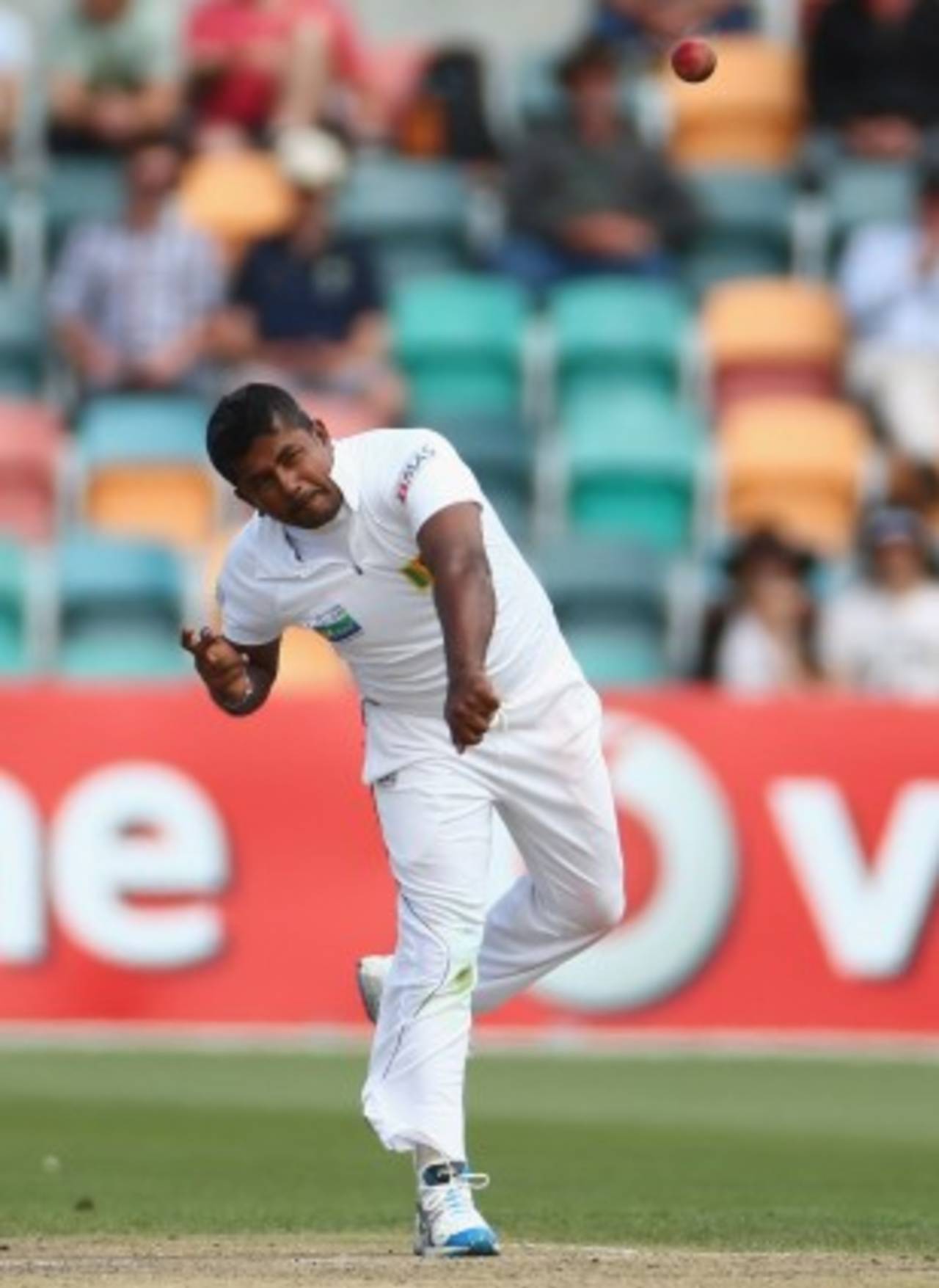In Samuel Beckett's tragicomedy 'Waiting for Godot', the play's two protagonists await the arrival of a man named Godot, whom they feel they know and must arrive soon. In reality, neither has ever actually had much to do with Godot, and ultimately, he never comes. For large periods of day two in Sydney, Sri Lanka lingered for magic to materialise, but their passivity did not yield the results they required to become ascendant in the Test. It is a strategy they have persisted with in the last two months despite its failure to deliver a winning position, and at the SCG, Sri Lanka watched and waited until the game began to slip away.
Mahela Jayawardene's conservatism might have been understandable had it only applied to his wayward fast bowlers in the morning session. But while he kept the field up during David Warner's early salvo, his best bowler was fitted with an unflattering field upon introduction, when the scoring rate had already slowed.
Rangana Herath had four men on the fence when he came on immediately after lunch; three on the left-hand batsman's leg side, and one at deep point. Unsurprisingly, Warner and Phillip Hughes were content to progress risk-free, taking particular joy in the 90-degree arc left vacant for their pushes, square on the off side. Sri Lanka effectively banked on the pair making a mistake, but when the error came in the 35th over, Australia were already well placed to take a sizeable first innings lead.
That Herath did not bowl in the first session was itself an odd act of inaction on Jayawardene's part. In the second innings in
Hobart, Herath proved his ability to break through when Australia sought quick runs, yet when Warner and Hughes were doing exactly that in the first session, the
leading wicket-taker of 2012 was deemed unnecessary. Even if he did not strike, Herath has been Sri Lanka's most dependable squeezer since he became a regular in the Test side, but Jayawardene did not stray from his game plan, no matter how ineffective his inexperienced pace attack was at stemming the flow of runs. If there is a queen in the battlements, what sense is it to pursue an advantage with a handful of pawns?
Even Tillakaratne Dilshan was tried before Herath finally saw the ball, and it had been so in Hobart as well, where Herath was the sixth to be bowled in both innings. In Melbourne, where Sri Lanka were defending a staggeringly small total, their match-winner came on when Australia had already moved to within 40 of the visitor's score.
"I had a little chat with Mahela about that, and it was a quite a tough call," coach Graham Ford said at the end of the day's play. "He really felt that the offspin would cause more of a problem with the left-handers at the crease, and he went with that option. I think it was very close to going with a double spin option in that session, but in the end, we decided to give the young seamers time to settle. They were nervous to start with, and Mahela felt that giving them a reasonable spell would get them into their work."
If it was really believed that Dilshan was more likely to take the wicket of a left-hand batsman than the man Jayawardene believes is the second-best bowler he has ever played with, the decision to leave Suraj Randiv out of the playing XI becomes a baffling one. Dilshan is better than your run-off-the-mill part-time tweaker perhaps, but he is no allrounder. And if Sri Lanka rate offspin so highly against left-hand batsmen, choosing their premier off-break bowler on a dry pitch is not far from a no-brainer against an opposition carrying five southpaws out of their top seven. Instead, both their second string seamers, who average above 55, were picked ahead of Randiv. Sri Lanka already trail Australia desperately in skill and mastery of the conditions. If they continue to give away ground tactically as well, another sound defeat may await them in the next three days.
Before the series, Mahela Jayawardene had hinted that Sri Lanka's plan of attack in Australia would hinge on parsimony and patience because they lacked bowlers capable of venom and verve. It was a fair strategy perhaps, and his assessment of his resources was not far wrong, but Sri Lanka's bowling situation has changed drastically. Jayawardene is now down to seam
options number 4, 5 and 6, and his batting unit is only slightly less depleted. If there was ever a time to take a risk with a daring field or an outlandish innovation it is now, when his plight appears so dire. Sri Lanka will bemoan their poor fortune at having failed to send Michael Clarke back when he was trapped in front first ball, or grassed a catch off Matthew Wade at short leg, but it is Rangana Herath who created both chances, and by failing to give him every chance of breaking through, they allow the opposition to coast towards powerful positions.
Australia may not be the world's best team at present, but as even South Africa discovered, it still takes a special performance buttressed by a positive attitude to beat them on their own soil. In Waiting for Godot, Vladmir and Estragon remained eternally unfulfilled. If Sri Lanka's
inertia continues into day three and the second innings, that maiden victory in Australia will remain a dream.
